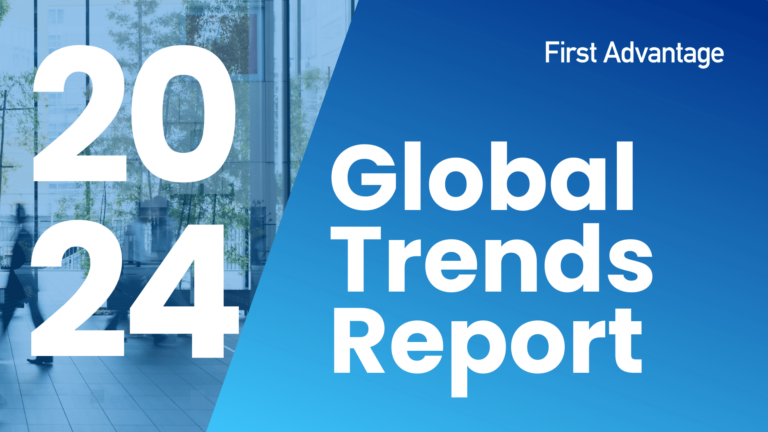The best background check program should reflect the specific needs of your organization. Yet, sometimes it helps to know what others in your industry are doing, how their screening strategy is faring and what lessons you can learn from their successes and failures—and apply to your program.
Here, we’ve hand-picked a few industries and we’re sharing an interesting performance metric—candidate eligibility rates—to help you better understand your program performance. This simple number can potentially reveal if you’re rejecting or accepting too many or too few candidates compared to your industry. From there, you can internally review your program, if necessary, and adjust it to better align with your industry. NOTE: The screening statistics provided below include aggregate data from the 66+ million annual global searches performed by First Advantage.
To hire or not to hire? Candidate eligibility rates offer cross-industry visibility.
Many organizations use an automated screening matrix, sometimes called an “adjudication matrix,” to efficiently determine if a candidate is eligible for hire, based on the results of their background check. These matrices digitally analyze the results of different background check components (think: criminal searches, verifications, etc.) using a list of pre-set hiring guidelines and return the overallbackground screening status as “eligible” for hire or “decisional.” Decisional outcomes must be manually reviewed by the employer’s hiring team, who will make the final decision as to eligibility.
This metric, known as the candidate eligibility rate, essentially reveals how many candidates are passing your background check and proceeding to the next step of the hiring process. According to our customer data, candidate eligibility rates vary substantially across industries.
- Within Retail, 98.5 percent of candidates were eligible for hire after criminal screening, while 7.1 percent of retail candidates required a decisional review by the employer.
- Similarly, 96.9 percent of candidates within the Transportation industry were eligible for hire after criminal screening; however, 19.6 percent of candidates required a decisional review.
- Staffing firms experienced similar numbers, with 95.5 percent of candidates eligible for hire after criminal screening, and 15.2 percent requiring decisional review.
- Healthcare is different. Only 78.5 percent of candidates were eligible for hire after criminal screening, and the industry experienced an 18.8 decisional rate.
- Financial Services dips even further, with just 67 percent of candidates eligible for hire and a nearly a third—29.3 percent—requiring a decisional review.
Recognize what is commonly accepted and what is not.
Generally, regulated industries such as Healthcare and Financial Services follow strict industry guidelines when hiring new employees, which explains the lower eligibility rates and higher decisional rates. On the other hand, unregulated industries with higher turnover rates such as Retail and Staffing often need to fill many positions, fast. As a result, they may have fewer hiring restrictions, resulting in consistently higher eligibility rates.
If your company operates within any of these industries:
- Take note of your industry’s eligibility rate and compare it to your own candidate eligibility rate.
- If your organization’s eligibility rate is notably higher or lower, consider reviewing your screening guidelines with your internal hiring team and/or your legal counsel. It might be time to update your adjudication matrix, or simply adjust the list of acceptable or unacceptable data points fueling your adjudication matrix.
If you decide to revise your screening guidelines, always work closely with your legal counsel to ensure compliance with the latest federal, state and municipal consumer protection laws (think: Fair Credit Reporting Act, “Ban the Box,” EEOC individualized assessments for criminal records, etc.), and industry requirements.
Review and consider the following data and analytics within various industries by reading the full report: Vertical Trends & Insights: Retail, Transportation, Staffing, Healthcare and Financial Services. VIEW NOW
